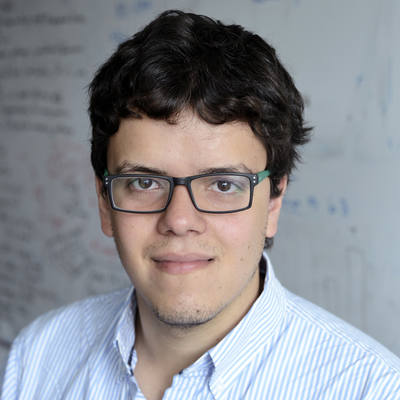
Guillermo Parada
PhD Student
Alumni
This person is a member of Sanger Institute Alumni.
My aim is to study the gene expression regulation mechanisms by analyzing high-throughput sequencing data.
My timeline
Rotation project at Maritn Hemberg (WTSI) and Eric Miska laboratory (GI)
Enrroled as graduate student at The Wellcome Trust Sanger Institute, Univestity of Cambridge
Visitor worker at Eric Miska laboratory, Gurdon institute, Department of Genetics, University of Cambridge
Research assistant at Estela Andres laboratory, Department of Cellular and Molecular Biology, Faculty of Biological Sciences, Pontificia Universidad Católica de Chile.
Research assistant at Katia Gysling laboratory, Department of Cellular and Molecular Biology, Faculty of Biological Sciences, Pontificia Universidad Católica de Chile.
Professional Title of Biochemist
Best poster presentation award in the session called “Genomics, Proteomics, Metagenomics and Metabolomics” at International Society for Computational Biology Latin America 2012 Conference on Bioinformatics
Thesis research: “Bioinformatics analysis of non-canonical intros a the human transcriptome” at Katia Gysling laboratory.
Licentiate in Biochemistry, Pontificia Universidad Católica de Chile.
Bachelor in Biochemistry, Pontificia Universidad Católica de Chile.
Enrolled as undergrad student at Pontificia Universidad Católica de Chile.
Quick links
My publications

Non-canonical splice sites are highly involved in alternative splicing and some show tissue-specific alternative splicing patterns. (A) Participation of non-canonical splice sites in alternative splicing. (B) The use of a non-canonical splice site generates a frame shift and a premature termination codon that disrupts a NAP-like domain (highlighted in yellow) of the TSPYL2 protein. A tissue-specific pattern of 3′ alternative splice site selection is shown across seven human tissues. Coverage quantification is plotted, where error bars indicate the 95% binomial confidence interval. (C) CPSF3 gene has an alternative 5′-GG non-canonical splice site. Coverage quantification shows a testis-specific selection of the 5′-GG non-canonical splice site.
